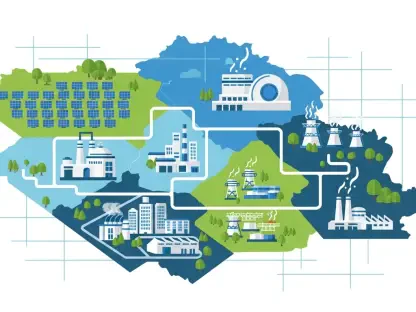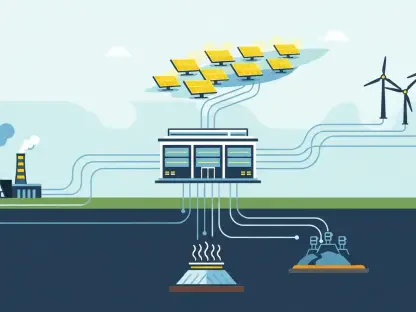In an era of climate scrutiny and rising carbon costs, corporate strategy is changing fast. There is a clear signal: cutting emissions can pay dividends beyond PR—directly fattening the bottom line. Under pressure from tightening regulations, carbon pricing, and savvy investors, companies find that sustainable actions often translate into financial returns. In fact, climate “leaders” reported average net gains equal to 7% of revenue (about $200 million) from their decarbonization efforts.
Studies confirm that companies integrating sustainability goals often outperform peers: those coupling growth with ESG improvements delivered higher total returns than competitors who lagged. Simply put: doing good and doing well are converging, and the market is rewarding it.
Ball Corporation, for example, notes that actively managing emissions has become a strong driver of its competitive advantage, attracting customers and investors aligned with these goals.
This article will show how companies can turn decarbonization into profit by focusing on three drivers: operational efficiency that reduces waste and energy use, policy incentives that reward low-carbon practices, and financial-market pressures that increasingly favor sustainable firms. It will also outline practical strategies for profitable decarbonization, helping leaders identify where cutting emissions not only lowers risk but creates measurable competitive advantage.
The True Cost of Carbon
Mandated carbon accounting is revealing how much emissions hide in profit margins. A recent University of Chicago/Booth study found that in 2019, the average corporate “carbon damage”— using the EPA’s social cost of about $190 per ton—was roughly 44% of profits. This figure was skewed by big polluters, but even median values were substantial, and U.S. companies still “spend” about a quarter of their earnings offsetting carbon’s societal cost.
In practical terms, every ton of CO₂ avoided can translate into dollars saved on carbon taxes, compliance, and reputational costs. Facing such figures, cutting emissions isn’t just altruism—it is risk management.
In that breath, major producers are deploying proven strategies to cut carbon and even improve margins. For example, ExxonMobil reports it “cut methane emissions intensity by more than 60%” since 2016, noting that reducing leaks is “smart business” because keeping more gas in the pipe means more product to sell. Industry analyses highlight a suite of high-impact measures (from eliminating all non-emergency flaring to electrifying upstream facilities or adding carbon-capture systems) that could halve oil-and-gas emissions intensity over the next decade.
By trimming their carbon footprint, firms can retain more of their revenue and avoid future liabilities.
Operational Efficiency and Profit
Often, the first gains come from classic efficiency. Upgrading equipment, optimizing processes, and eliminating waste directly slashes energy and materials costs. In fact, a global survey found that more than half of companies believe they can reduce emissions by 10–40% at net cost savings.
Many corporations report that early decarbonization wins come through efficiency measures—for example, modernizing heating/cooling systems or production lines—that immediately cut utility bills. These cost savings often compound over time, creating recurring margin improvements beyond the initial investment.
One consumer-goods firm even redesigned its products and supply chain to cut emissions and saved money in the process. Every kilowatt-hour saved or waste process streamlined flows straight to the bottom line. In short, greenhouse-gas cuts are often good business: each incremental drop in fuel use or power consumption is extra profit today.
Strategies for Profitable Decarbonization
Digitalization is making decarbonization a business-as-usual activity. Industry experts observe that “digitalization in the oil and gas sector can help with preventative maintenance, detect and reduce emission leaks, and improve the sector’s environmental footprint”. Leading companies capitalize on the overlap of sustainability and savings by pursuing multiple fronts:
Operational efficiency: Upgrading assets and processes slashes utility expenses. Energy-efficiency and waste-reduction projects often pay for themselves quickly. (As noted, many firms find 10–40% emissions cuts with net cost savings.) These actions cut operating costs in dollar terms every year.
Renewable energy: Securing wind or solar power through long-term contracts locks in lower, stable energy prices. Many companies now save on electricity by swapping volatile fossil-fuel costs for renewables—effectively buying “insurance” against oil and gas price spikes while cleaning their supply.
Innovative products: Developing low-carbon products or circular services can open new revenue streams. McKinsey analysis shows that “triple outperformer” firms—those growing profitably and improving ESG—deliver significantly higher returns than their peers. In practice, this means a green product line or sustainability-embedded service can command premium pricing or capture market share.
Capital and incentives: High-ESG firms enjoy cheaper financing and tax breaks. Research finds companies with higher sustainability ratings pay less in capital costs: stronger ESG credentials correlate with lower equity beta and narrower credit spreads. In addition, new policies (like tax credits in the U.S. Inflation Reduction Act) and emerging carbon markets turn green investments into immediate fiscal benefits.
By cutting emissions, companies often unlock grants, credits, or better loan terms—all of which boost net profit.
Unlocking Long-Term Value
Ultimately, cutting emissions is not just an environmental project, it’s a strategic one. Firms that integrate climate goals into corporate culture tend to capture the most value. According to ESG analysts, “sustainability ROI” must be measured in financial terms for stakeholders to take it seriously.
For example, reducing resource use (whether energy, plastic, or raw materials) not only saves money but also builds brand trust and customer loyalty. Stakeholders increasingly reward companies that can prove climate action translates into both financial and reputational resilience.
These intangible benefits, although harder to quantify, still translate into future sales and lower risk. Companies that align their finance, operations, and marketing with sustainability frequently report better overall performance.
In other words, embedding decarbonization into the business strategy creates a flywheel: efficiencies improve profits, which fund further green innovation, which in turn attracts customers and capital.
Profits in the low-carbon era require a new playbook. But the old assumptions must change, because market success goes to those who proactively seize the green opportunity.
The companies that adapt fastest will turn sustainability into a cornerstone of competitive advantage—proving that they can do well by doing good.









